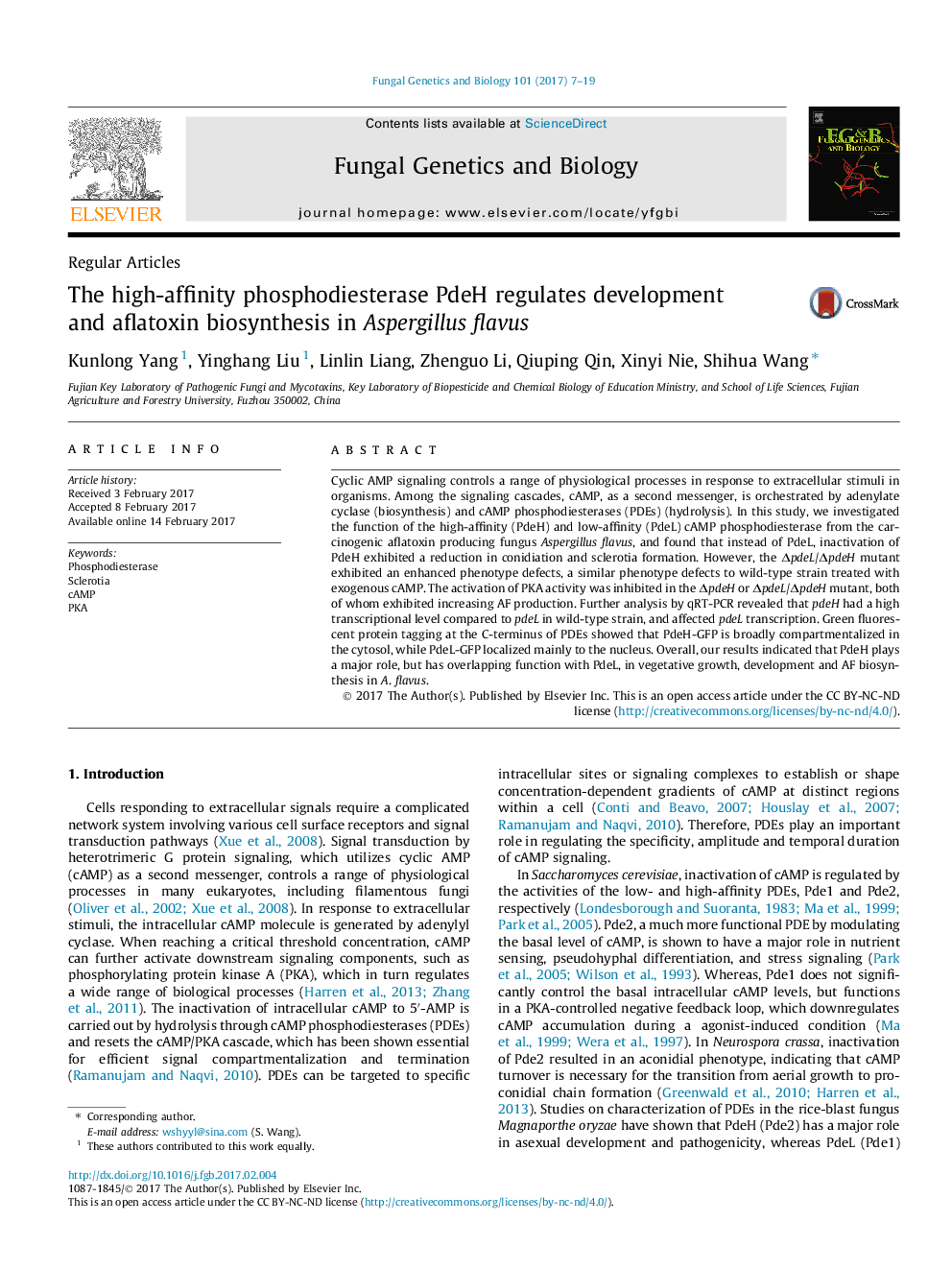| Article ID | Journal | Published Year | Pages | File Type |
|---|---|---|---|---|
| 5532795 | Fungal Genetics and Biology | 2017 | 13 Pages |
â¢PdeH is important for growth, conidia and sclerotia formation in A. flavus.â¢PdeH negatively regulates aflatoxins biosynthesis.â¢Inactivation of pdeH led to decreasing PKA activity, leading to decreased aflatoxins biosynthesis.â¢PdeH-GFP was firstly done, and showed strong signal in the cytoplasm.â¢PdeL and PdeH has overlapping function in fungal development and AF synthesis.
Cyclic AMP signaling controls a range of physiological processes in response to extracellular stimuli in organisms. Among the signaling cascades, cAMP, as a second messenger, is orchestrated by adenylate cyclase (biosynthesis) and cAMP phosphodiesterases (PDEs) (hydrolysis). In this study, we investigated the function of the high-affinity (PdeH) and low-affinity (PdeL) cAMP phosphodiesterase from the carcinogenic aflatoxin producing fungus Aspergillus flavus, and found that instead of PdeL, inactivation of PdeH exhibited a reduction in conidiation and sclerotia formation. However, the ÎpdeL/ÎpdeH mutant exhibited an enhanced phenotype defects, a similar phenotype defects to wild-type strain treated with exogenous cAMP. The activation of PKA activity was inhibited in the ÎpdeH or ÎpdeL/ÎpdeH mutant, both of whom exhibited increasing AF production. Further analysis by qRT-PCR revealed that pdeH had a high transcriptional level compared to pdeL in wild-type strain, and affected pdeL transcription. Green fluorescent protein tagging at the C-terminus of PDEs showed that PdeH-GFP is broadly compartmentalized in the cytosol, while PdeL-GFP localized mainly to the nucleus. Overall, our results indicated that PdeH plays a major role, but has overlapping function with PdeL, in vegetative growth, development and AF biosynthesis in A. flavus.
